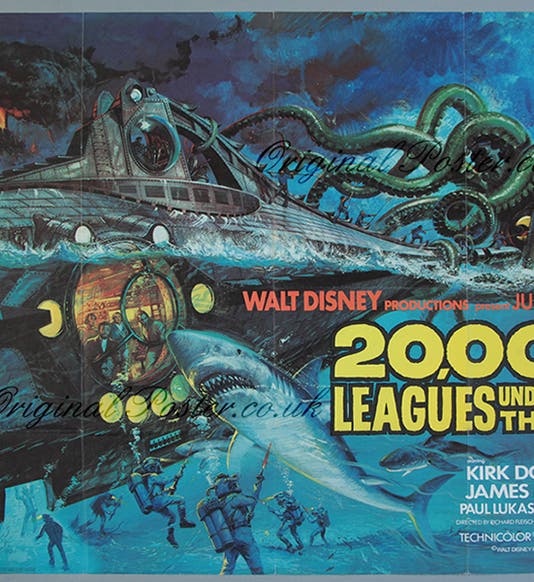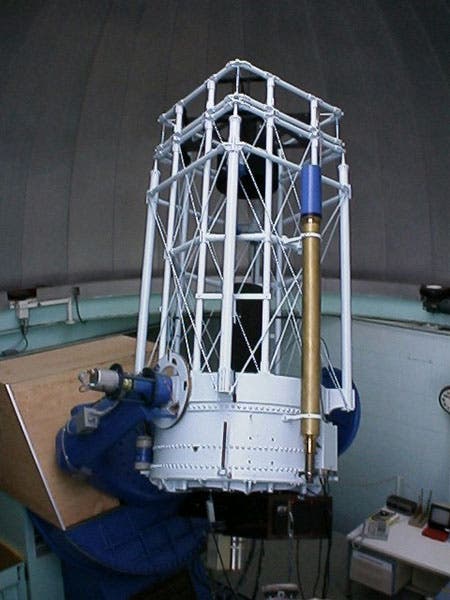Scientist of the Day - Henri Chrétien
Henri Chrétien, a French optician and astronomer, was born Feb. 2, 1879. Chrétien is known for two rather different achievements, although both were a product of his expertise in optics. First of all, he designed a telescope lens system that is now the most widely used in the world for large telescopes. He was working at the Mount Wilson Observatory in the early 1910s, with a superb telescope technician named George Ritchey, and the two of them figured out how to take an old design, the Cassegrain telescope, which uses hyperbolic mirrors, and improve it by introducing a third corrective lens or mirror. There are many optical effects that cause a telescope image to suffer – they have names like spherical aberration, coma, astigmatism – and the new Ritchey-Chrétien design design eliminated most of these. In addition, it had a wide field of view and was relatively compact.
Ritchey, who worked at Mount Wilson, tried to get George Ellery Hale to adopt the design for the 100" reflector at Mount Wilson and the 200" at Mount Palomar, but he failed to convince his boss and left in a huff. However, the Ritchey-Chrétien telescope was a superior design, and it was eventually adopted by most of the world’s large telescopes, including the most famous telescope in the world, the Hubble space telescope.
Chrétien's other notable optical contribution was in cinema. In the 1920s, he began to experiment with anamorphic lenses, and by 1937 he had one, which he called a Hypergonar lens. An anamorphic lens distorts an image with a purpose. In the case of the Hypergonar lens, it could take a wide-screen image and compress it down so it would fit on a standard strip of 35 mm film. If you then projected the film through another set of anamorphic lenses mounted in reverse, you would have a wide-screen image. Chrétien did not have much success convincing French filmmakers to use his anamorphic lenses, although he did mount an effective display of them in 1937. But in the United States, with the advent of television in 1950, there was great interest in producing a cinematic product that television could not emulate. The year 1952 saw the launch of Cinerama, an elaborate wide-screen projection process that was breath-takingly impressive, but required special film, special screens, indeed, entirely new theaters, and was very expensive to produce.
Twentieth-Century Fox heard about Chrétien’s invention, acquired some of his lenses, and proceeded to develop their own wide-screen process, using ordinary film, at a fraction of the cost of Cinerama. They called it CinemaScope, and in their publicity, Fox emphasized the importance of Chrétien, even incorporating the diminutive 73-year old scientist in their press releases, as we see in this newsreel clip. The first CinemaScope film was The Robe (fourth image), with Richard Burton and Jean Simmons, a classic that I have never seen. Walt Disney acquired the rights immediately, and 1954 saw the launch of 20,000 Leagues Under the Sea, with Kirk Douglas and James Mason, and that one I have seen, several times. It is one of the great CinemaScope films ever shot (first image).
Chrétien's CinemaScope process did not last long; by 1958, it was being replaced by an improved system called Panavision. But Chrétien is still a hero in cinematic history for his invention of the first affordable process for giving us panoramic movies.
Dr. William B. Ashworth, Jr., Consultant for the History of Science, Linda Hall Library and Associate Professor emeritus, Department of History, University of Missouri-Kansas City. Comments or corrections are welcome; please direct to ashworthw@umkc.edu.









